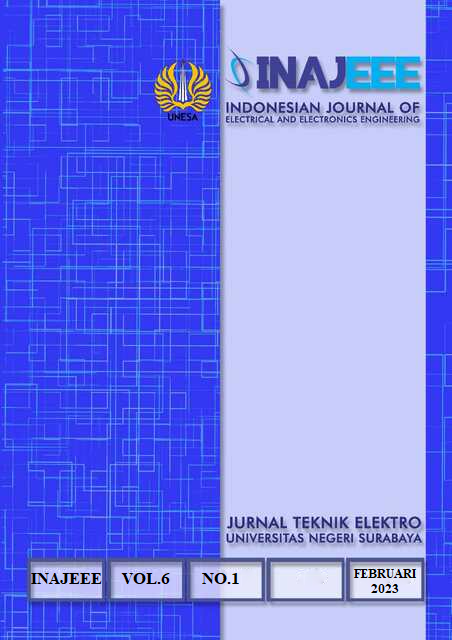Flood Notification System Using NodeMCU with Telegram Monitoring
DOI:
https://doi.org/10.26740/inajeee.v6n1.p9-12Abstract
Flooding is a natural disaster that often occurs in Indonesia. Floods are often caused by the inability of rivers to accommodate water discharge, which is exacerbated by the handling of riverbank areas, resulting in an increased risk of natural disasters such as floods. Flood risk management is an urgent need considering the potential and pattern of disaster cycles in Indonesia that recur within a certain time interval. Flood risk management technology, both in terms of risk management technology and post-flood handling, is important for almost all regions in Indonesia. One of the technologies that can help with disaster risk management is an early warning system, which is an integrated system between hazard monitoring, disaster risk assessment, communication, and disaster preparedness that allows individuals, communities, and governments to take appropriate action in order to minimize the impact of disasters. By utilizing telecommunication networks and a simple and clear formulation of information, the dissemination of disaster information can be done quickly and precisely. A flood notification system is a system that serves as a warning and alert system in the event of a flood disaster. This system gives us a flood warning based on the water level. The brain of the prototype is the ESP8266 Nodemcu-based Wi-Fi module. In this system, it uses an SRF05 ultrasonic sensor and a water level float sensor to detect the water level. In this study, a prototype of a flood notification system that can be monitored with telegram commands was developed. Thus, access to flood information is easier and clearer. This system's information will be a warning of danger signs, allowing users to anticipate disasters, particularly flood disasters.This alert information is based on the water level.
Keywords: Flood, Nodemcu ESP8266, Sensors, Telegram
Downloads
Published
Issue
Section
License
Copyright (c) 2023 INAJEEE (Indonesian Journal of Electrical and Electronics Engineering)

This work is licensed under a Creative Commons Attribution-NoDerivatives 4.0 International License.
 Abstract views: 280
,
Abstract views: 280
, PDF Downloads: 442
PDF Downloads: 442




